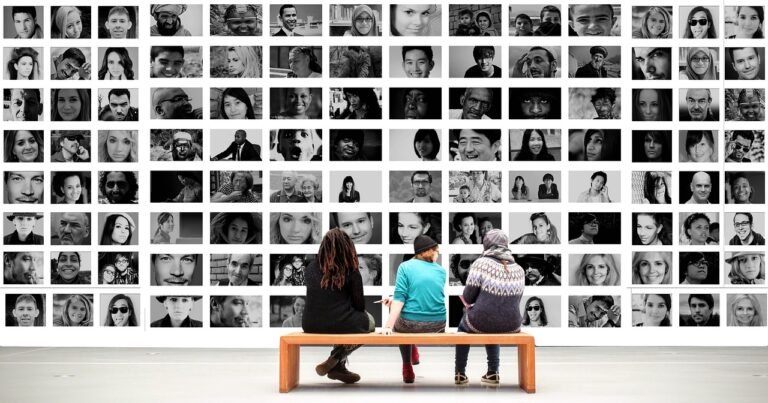The Dangers of DeepFaceLab Software: Understanding Deepfake Videos, Images, and Voice Augmentation
Introduction to DeepFaceLab and Deepfake Technology
DeepFaceLab is a widely-used open-source software that enables the creation of deepfake videos and images. Deepfake technology, a portmanteau of “deep learning” and “fake”, leverages artificial intelligence to manipulate or generate digital media content that appears remarkably genuine. This technology utilizes neural networks, particularly deep learning algorithms, to analyze and replicate facial expressions, movements, and voice patterns to produce highly realistic digital fabrications.
The advent of deepfake technology has introduced both innovative possibilities and significant concerns. DeepFaceLab, among other similar tools, provides a platform for users to meticulously edit video and image content. With user-friendly interfaces and comprehensive guides, these tools have become increasingly accessible to the general public. This democratization of sophisticated technology means that even individuals with minimal technical expertise can now create content that can deceptively mimic real-life scenarios.
As the sophistication of deepfake tools continues to advance, the potential for misuse expands. The ability to create highly convincing digital media has implications across various sectors, including entertainment, politics, and security. While deepfake technology can be employed for benign purposes such as film production or educational content, its potential for malicious use cannot be overlooked. The risk of generating deceptive content that can undermine trust and authenticity in digital communications is a growing concern.
Understanding the mechanics and implications of DeepFaceLab and similar software is essential in addressing the ethical and security challenges posed by deepfake technology. As we navigate this rapidly evolving landscape, it is crucial to balance the innovative applications of deepfake tools with robust measures to prevent their potential misuse.

The Evolution and Advancements in Deepfake Technology
Deepfake technology has undergone significant evolution since its inception, transforming from rudimentary image manipulations to highly sophisticated, realistic videos and voice augmentations. The journey began with the early stages of photo editing, where simple alterations were made using basic software. However, the real leap forward occurred with the advent of machine learning and artificial intelligence, which have been pivotal in refining deepfake technology.
Initially, the process involved manual editing techniques that were not always convincing. The development of generative adversarial networks (GANs) marked a turning point. Introduced by Ian Goodfellow and his colleagues in 2014, GANs involve two neural networks – a generator and a discriminator – that work in tandem to produce highly realistic images. This innovation laid the groundwork for subsequent advancements in deepfake technology, enabling the creation of videos and images that are nearly indistinguishable from real ones.
As machine learning algorithms became more sophisticated, so did the quality of deepfakes. Techniques such as facial recognition and motion capture improved the realism of these digital fabrications. One notable project that showcased these advancements was the creation of a deepfake video of former U.S. President Barack Obama. This video, produced by researchers at the University of Washington, demonstrated the potential of deepfake technology to convincingly mimic a person’s speech and mannerisms.
Another breakthrough came with the development of voice augmentation technologies. These advancements allow for the replication of a person’s voice with high accuracy, further enhancing the overall realism of deepfakes. Companies like Lyrebird and Descript have made significant strides in this area, raising both interest and concern regarding the ethical implications of such technology.
In conclusion, the evolution of deepfake technology has been marked by substantial advancements in machine learning and artificial intelligence. These improvements have not only enhanced the quality and realism of deepfakes but also highlighted the potential and capabilities of this powerful technology. As deepfake technology continues to evolve, it is crucial to remain vigilant about its ethical use and the potential dangers it poses.
Potential Applications and Ethical Concerns
Deepfake technology, powered by software such as DeepFaceLab, has a wide array of applications that span both positive and negative spectrums. On the positive side, deepfake technology has transformative potential in the entertainment, education, and creative industries. Filmmakers and digital content creators can leverage this technology to bring historical figures to life or create realistic visual effects that would otherwise be cost-prohibitive. In education, deepfake technology can be used to create immersive learning experiences, such as virtual history lessons where students interact with realistic representations of historical figures. Additionally, artists and musicians can utilize deepfake technology to experiment with new forms of expression, creating unique, engaging content.
However, the potential for misuse of deepfake technology raises significant ethical concerns. One of the most alarming uses of deepfakes is in the spread of misinformation. Deepfake videos and images can be used to manipulate public opinion by creating false narratives, which can have serious implications in political contexts. For instance, fabricated videos of politicians making inflammatory statements or engaging in unethical behavior can influence elections and undermine democratic processes. Furthermore, deepfake technology can be used in cyberbullying, creating fake videos or images to harass or embarrass individuals, leading to significant emotional and psychological harm.
Another critical concern is identity theft. Deepfake technology can be used to create realistic impersonations, allowing malicious actors to gain unauthorized access to personal information or financial accounts. This poses a significant threat to individual privacy and security. The ethical dilemmas surrounding deepfake technology also extend to issues of consent and authenticity. As deepfakes become increasingly indistinguishable from reality, it becomes essential to develop robust verification mechanisms and ethical guidelines to ensure that this powerful technology is used responsibly.
In light of these concerns, it is imperative for developers, policymakers, and society at large to consider the ethical implications of deepfake technology. While its potential applications are vast and varied, the responsibility to prevent misuse and protect individuals from harm cannot be overstated.
Voice Augmentation and Its Implications
Voice augmentation technology has emerged as a revolutionary tool that enables the creation of synthetic voices capable of closely mimicking real individuals. This cutting-edge technology operates by analyzing extensive audio data from a target individual, capturing unique vocal characteristics such as pitch, tone, and speech patterns. Advanced algorithms then utilize this data to generate a synthetic voice that is virtually indistinguishable from the real one. The process shares significant similarities with deepfake video and image creation, where machine learning models are trained to replicate visual features with high accuracy.
The potential applications of voice augmentation are vast, spanning from entertainment and customer service to accessibility enhancements for individuals with speech impairments. However, these benefits come with serious risks and potential for misuse. One of the primary dangers is fraud; malicious actors can use synthetic voices to deceive individuals and organizations, leading to financial losses or unauthorized access to sensitive information. Impersonation is another critical concern, where synthetic voices can be used to mimic authoritative figures, thereby spreading misinformation or conducting scams.
Moreover, the erosion of trust in audio communications is a significant implication of voice augmentation technology. As synthetic voices become more convincing, it becomes increasingly difficult for individuals to distinguish between authentic and fabricated audio content. This erosion of trust can have far-reaching consequences, affecting everything from personal relationships to the credibility of media and public communications. The potential for deepfake voice technology to be used in political or social manipulation further underscores the gravity of this issue.
In conclusion, while voice augmentation technology holds promise for various positive applications, the potential for its misuse cannot be overlooked. Vigilant regulation, ethical considerations, and public awareness are critical to mitigating the dangers associated with this powerful tool. Ensuring that these technologies are developed and used responsibly will be essential to preserving trust and security in audio communications.
The Challenge of Detection and Authentication
The escalation in the sophistication of deepfake technology, particularly through software like DeepFaceLab, poses a significant challenge for detection and authentication. As deepfake creators continue to refine their methods, detection tools must evolve in tandem to keep pace. This ongoing arms race between deepfake creators and those striving to unmask them is a critical aspect of the current landscape.
One of the primary methods employed to detect deepfake content involves the use of artificial intelligence (AI) and machine learning algorithms. These advanced systems analyze various elements within a video or image, identifying inconsistencies that may suggest manipulation. For example, deepfakes often exhibit subtle anomalies in facial expressions, lighting, and eye movements, which can be detected through meticulous scrutiny by AI-driven tools. However, as deepfake technology advances, these anomalies are becoming increasingly difficult to discern.
Moreover, the integration of Generative Adversarial Networks (GANs) in deepfake creation has amplified the complexity of detection. GANs consist of two neural networks: a generator that creates fake content and a discriminator that evaluates its authenticity. Through continuous iterations, the generator refines its output to evade detection by the discriminator, resulting in highly convincing deepfakes. This iterative process enhances the realism of deepfakes, making traditional detection methods less effective.
The development of deepfake detection tools must therefore incorporate cutting-edge AI and machine learning techniques. Researchers are exploring innovative approaches, such as leveraging blockchain technology for content verification and employing neural networks that are specifically trained to recognize deepfake patterns. These methods hold promise, yet they also underscore the reactive nature of detection efforts, constantly adapting to the evolving threats posed by deepfake technology.
Ultimately, the balance between deepfake creation and detection is a dynamic and ongoing challenge. As creators of deepfake content become more adept, the need for robust, adaptive detection mechanisms becomes increasingly critical. The role of AI and machine learning is pivotal in this battle, driving advancements on both sides and shaping the future of media authentication.
The Psychological and Societal Impact
The advent of DeepFaceLab software and similar deepfake technologies has profound psychological and societal implications. On an individual level, the ability to fabricate highly convincing videos, images, and voice recordings can lead to significant emotional distress. Victims of deepfakes, often depicted in compromising or defamatory situations, may experience anxiety, depression, and a pervasive sense of vulnerability. This is particularly alarming in the context of revenge porn, cyberbullying, and identity theft, where personal and professional lives can be severely affected.
On a societal scale, deepfakes contribute to an atmosphere of pervasive distrust and skepticism. As these synthetic media become more sophisticated, discerning reality from fiction becomes increasingly challenging. This erodes public confidence in digital content, prompting individuals to question the authenticity of everything they see and hear online. The result is a society where misinformation can spread rapidly, and genuine information is often met with undue skepticism.
Moreover, the impact of deepfakes extends to public trust in institutions and media. The deliberate use of deepfake technology to manipulate public opinion or discredit political figures and institutions undermines the democratic process. For instance, fabricated videos of politicians making controversial statements can influence elections, fuel political polarization, and destabilize governance. Similarly, deepfakes used in media can discredit reputable news outlets, driving the public towards unreliable sources and fostering the spread of fake news.
Additionally, deepfakes can strain personal relationships. Trust, a cornerstone of any relationship, is jeopardized when the authenticity of digital interactions is in question. This is particularly pertinent in an era where much of our communication occurs online. The potential for deepfakes to create false narratives about individuals can lead to misunderstandings, conflicts, and even the breakdown of relationships.
In conclusion, while deepfake technology represents a remarkable advancement in artificial intelligence, its potential for misuse poses significant psychological and societal risks. Addressing these challenges requires a multifaceted approach, including technological safeguards, legal frameworks, and public awareness initiatives to mitigate the detrimental effects of deepfakes on individuals and society at large.
Legal and Regulatory Responses
As deepfake technology advances, the legal and regulatory landscape is evolving to address the challenges it presents. Governments and regulatory bodies worldwide are recognizing the potential for harm posed by deepfake videos, images, and voice augmentation, prompting the creation and enforcement of laws aimed at curbing their misuse. However, the rapid development of this technology often outpaces legislative efforts, necessitating continual updates and adaptations to existing legal frameworks.
Several jurisdictions have already enacted laws specifically targeting the production and dissemination of deepfake content. For instance, in the United States, the state of California passed a law in 2019 criminalizing the use of deepfakes to influence elections, while Texas has banned the creation of deepfake pornographic materials without consent. Additionally, the federal “DEEPFAKES Accountability Act” has been proposed to mandate the labeling of synthetic media to enhance transparency and protect individuals from deceptive practices.
Notable legal cases also illustrate the judiciary’s role in addressing the misuse of deepfake technology. In 2019, a landmark case in China led to a court ruling that deepfakes used to defraud individuals would be treated as a criminal offense, paving the way for stricter enforcement and penalties. Similarly, the European Union’s General Data Protection Regulation (GDPR) provides a robust framework for protecting personal data, which can be leveraged to address privacy violations arising from unauthorized deepfake content.
Policymakers, technology companies, and international organizations are crucial in developing effective regulatory responses. Policymakers must craft legislation that balances innovation with protection against harm, while tech companies are increasingly implementing measures to detect and prevent the spread of deepfake content. International cooperation is also vital, as the global nature of the internet means that unilateral actions are often insufficient to tackle the cross-border implications of deepfake technology.
Overall, while significant strides have been made in addressing the legal and regulatory challenges posed by deepfakes, ongoing efforts are essential to keep pace with technology’s evolution and ensure comprehensive protection for individuals’ rights.
Looking Ahead: The Future of Deepfake Technology and Society
As deepfake technology continues to evolve, its potential impact on society becomes increasingly profound. With advancements in artificial intelligence and machine learning, the line between real and computer-generated media is rapidly blurring. Future iterations of DeepFaceLab software and similar tools could produce deepfakes that are nearly indistinguishable from authentic content, posing significant challenges for individual discernment and institutional verification. This progression underscores the urgent need for proactive measures to address the associated risks.
One potential solution lies in technological innovation. Researchers are developing sophisticated detection algorithms capable of identifying deepfakes by analyzing inconsistencies that are imperceptible to the human eye. These tools will become essential in various fields, including journalism, law enforcement, and cybersecurity, to ensure the integrity of information. Additionally, the integration of blockchain technology could provide a transparent and tamper-proof method for verifying the authenticity of digital content.
Public awareness campaigns are equally important. Educating the general populace about the existence and potential dangers of deepfakes can foster a more informed and critical society. Media literacy programs should be incorporated into educational curricula to teach individuals how to critically evaluate digital media and recognize possible manipulations.
Moreover, a collaborative approach involving governments, tech companies, and civil society is crucial. Policymakers need to establish clear legal frameworks that address the misuse of deepfake technology while protecting freedom of expression. Tech companies must prioritize the development of ethical guidelines and invest in research aimed at reducing the potential harms of their innovations. Civil organizations can play a pivotal role by advocating for responsible use and raising public consciousness about the ethical implications of deepfakes.
In conclusion, while the future of deepfake technology holds remarkable possibilities, it also presents significant challenges that require collective action. Through technological advancements, public education, and collaborative governance, society can mitigate the risks associated with deepfakes and harness their potential responsibly. We must remain vigilant and proactive to ensure that this powerful technology is used for positive and constructive purposes.
For more articles related to technology, please browse around InnoVirtuoso and find more interesting reads.







